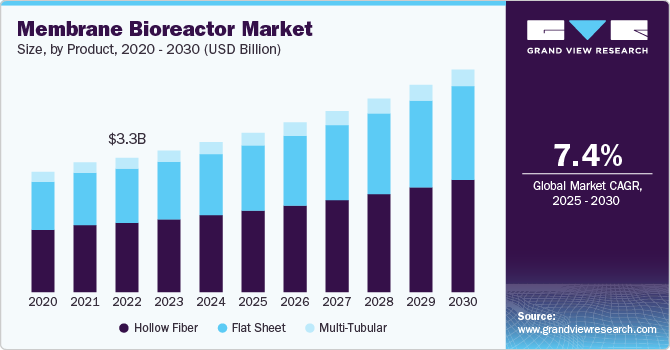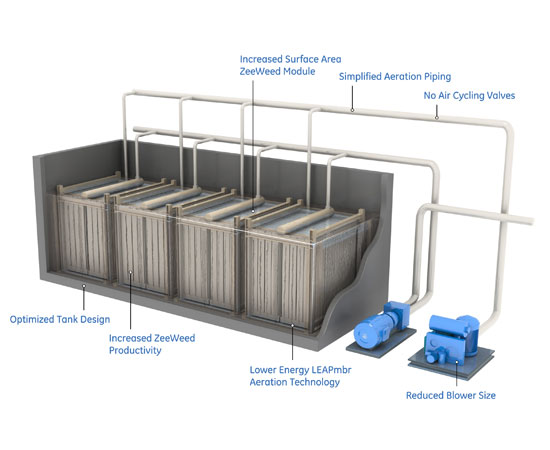How Membrane Bioreactor Technology Is Revolutionizing Wastewater Treatment
Membrane Layer Bioreactors Clarified: Effective Solutions for Tidy Water
Membrane layer bioreactors (MBRs) have actually arised as a sophisticated option for resolving journalism challenges of wastewater therapy. By integrating organic processes with sophisticated membrane purification, MBRs not only improve the high quality of cured water but likewise minimize the spatial demands of therapy centers. As environmental worries intensify, the role of MBR modern technology in advertising lasting water management ends up being significantly substantial. Nonetheless, the complexities of their procedure, advantages, and prospective applications warrant a closer examination to fully understand their influence on the future of water treatment.

What Are Membrane Layer Bioreactors?
Membrane bioreactors (MBRs) are sophisticated wastewater treatment systems that incorporate organic degradation processes with membrane layer filtering technology. This integration permits for the reliable removal of contaminants from water, making MBRs a favored option in various applications, consisting of local wastewater therapy and industrial effluent management.

Among the vital benefits of MBRs is their capability to produce high-grade effluent, commonly ideal for reuse in watering or industrial processes. In addition, MBRs need a smaller sized impact contrasted to standard therapy systems, making them suitable for urban setups where space may be limited.
Additionally, MBRs can properly manage varying influent lots and are much less vulnerable to the impacts of toxic shocks. These attributes add to their growing popularity as a lasting service for attending to the increasing demand for tidy water while decreasing environmental effects.
Just How Membrane Bioreactors Work
While the procedure of membrane layer bioreactors (MBRs) might appear complex, it fundamentally focuses on the harmony between organic procedures and membrane filtration. MBRs incorporate a biological treatment process, normally turned on sludge, with a membrane separation system to deal with wastewater efficiently.
In an MBR system, wastewater is initial presented into a bioreactor where microorganisms deteriorate raw material and various other pollutants. The organic task lowers the focus of toxins while advertising the growth of biomass. Following this biological treatment, the blended alcohol is subjected to membrane purification, which can be microfiltration or ultrafiltration, depending upon the preferred effluent top quality.
The membrane layers work as a physical barrier, enabling water and tiny solutes to pass while maintaining put on hold solids and larger molecules. This allows the system to keep a high concentration of biomass within the activator, boosting the therapy performance.
Moreover, the constant separation of treated water from the biomass helps with a small design and reduces the impact of the therapy facility. Generally, the combination of biological degradation and membrane layer purification in MBRs results in effective and reputable wastewater treatment, making certain high-quality effluent ideal for various applications.
Advantages of MBR Modern Technology
One of the essential advantages of membrane layer bioreactor (MBR) innovation is its capacity to produce top notch effluent with a significantly minimized footprint compared to standard wastewater therapy techniques. MBR systems properly combine biological treatment and membrane layer filtration, leading to exceptional elimination of contaminants, including put on hold solids, pathogens, and natural matter. This capacity results in effluent that often satisfies or exceeds strict regulative criteria for reuse and discharge.
Furthermore, MBR innovation permits for greater biomass focus, which enhances the treatment efficiency and minimizes the needed reactor quantity. This portable style is specifically helpful in urban areas where room is limited. The operational versatility of MBR systems also suggests they can adapt to varying influent top qualities and circulation rates, making them appropriate for a large range of applications.
Additionally, the decreased sludge production connected with MBR procedures adds to lower functional and upkeep prices. The membrane layers function as a physical barrier, lessening the threat of obstructing and making it possible for longer functional periods between cleaning. Overall, the advantages of MBR modern technology make it an attractive service for lasting wastewater treatment, resolving both environmental issues and the requirement for effective resource administration.
Applications of Membrane Layer Bioreactors
With their adaptability and performance, membrane layer bioreactors (MBRs) find applications across different markets, consisting of local wastewater treatment, commercial processes, and even visit the site water recovery. In local settings, MBRs offer a small service for treating wastewater, effectively eliminating contaminants while concurrently generating high-quality effluent that meets rigorous regulatory standards. This makes them specifically suitable for areas with restricted space.
In commercial applications, MBR technology is used for dealing with procedure water, specifically in sectors such as food and drink, pharmaceuticals, and petrochemicals. These industries take advantage of MBRs' capacity to take care of high organic loads and their performance in recouping beneficial sources from wastewater, such as nutrients and water.
Furthermore, MBRs play an essential duty in water recovery efforts, enabling the reuse of dealt with wastewater for watering, commercial processes, helpful resources or also as drinkable water after more therapy (Membrane Bioreactor). Their effectiveness in getting rid of microorganisms and contaminants makes them a trusted option for site here ensuring water quality in numerous reuse applications
Future of Water Treatment Solutions
The future of water therapy services is poised for transformative advancements driven by technical development and enhancing ecological understanding. As international water scarcity comes to be a pushing problem, brand-new approaches, consisting of membrane layer bioreactor (MBR) systems, are readied to play a pivotal function in boosting the performance and sustainability of water treatment procedures.
Emerging innovations such as expert system and equipment knowing are expected to optimize therapy procedures, allowing for real-time surveillance and predictive maintenance. This will enhance the overall dependability and efficiency of water therapy centers. Moreover, innovations in membrane materials, such as graphene and nanofiltration, assure to raise permeation rates and decrease fouling, causing reduced power consumption and functional expenses.
In addition, the combination of eco-friendly power resources into water treatment plants will certainly add to greener techniques. The circular economic situation design will certainly likewise acquire grip, urging the recovery of beneficial sources from wastewater, such as nutrients and energy.
Verdict

Membrane bioreactors (MBRs) have actually emerged as an advanced solution for attending to the pressing obstacles of wastewater treatment. By incorporating biological procedures with sophisticated membrane layer filtration, MBRs not just enhance the top quality of treated water yet likewise lower the spatial requirements of therapy facilities.One of the vital advantages of membrane bioreactor (MBR) modern technology is its capacity to create high-grade effluent with a substantially reduced impact compared to standard wastewater treatment techniques.With their versatility and performance, membrane bioreactors (MBRs) discover applications throughout numerous fields, including metropolitan wastewater therapy, industrial processes, and also water recovery.In conclusion, membrane layer bioreactors represent a considerable advancement in wastewater treatment innovation, incorporating biological procedures with effective membrane layer purification to create premium effluent.